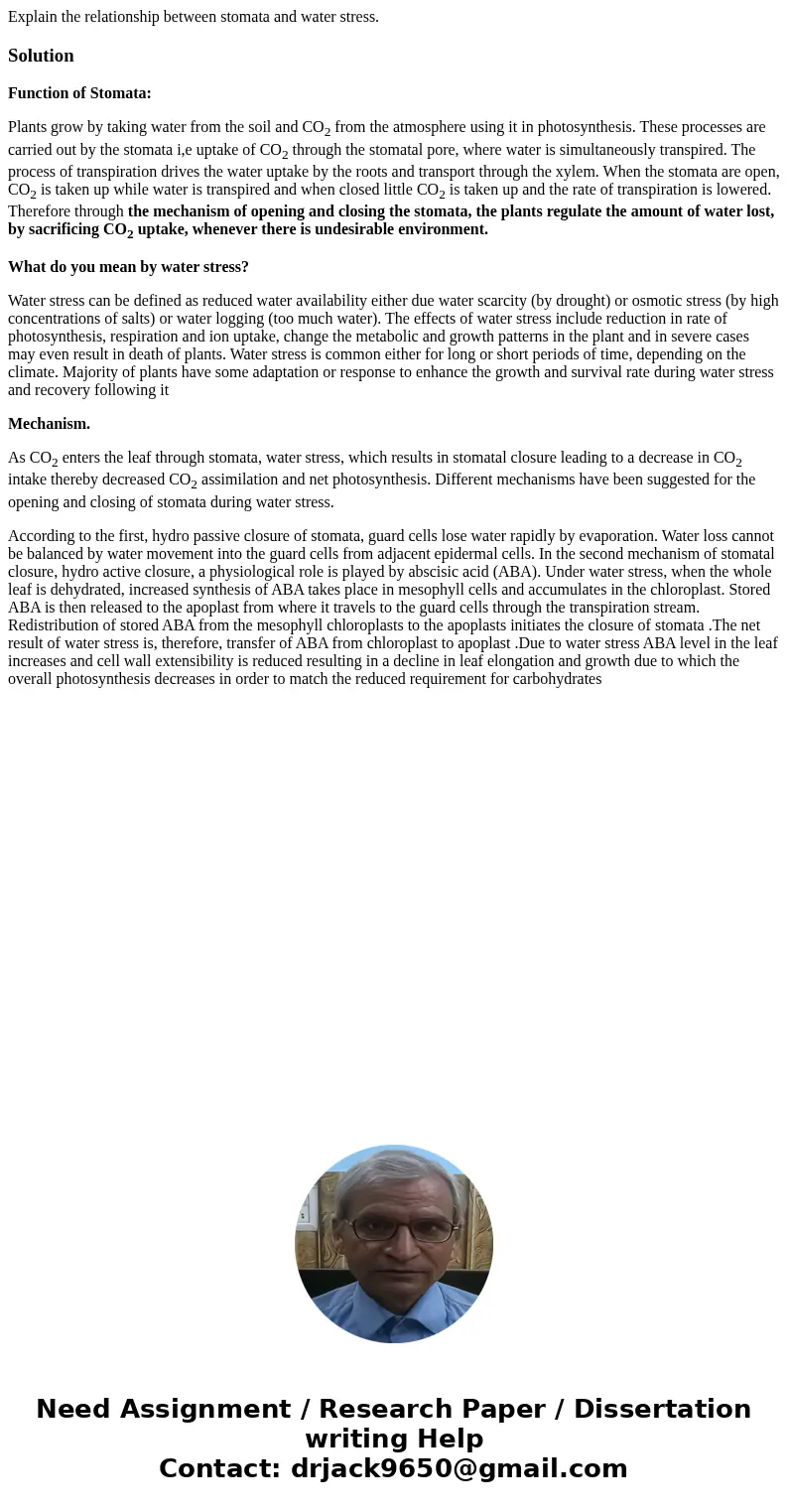Explain the relationship between stomata and water stressSol
Explain the relationship between stomata and water stress.
Solution
Function of Stomata:
Plants grow by taking water from the soil and CO2 from the atmosphere using it in photosynthesis. These processes are carried out by the stomata i,e uptake of CO2 through the stomatal pore, where water is simultaneously transpired. The process of transpiration drives the water uptake by the roots and transport through the xylem. When the stomata are open, CO2 is taken up while water is transpired and when closed little CO2 is taken up and the rate of transpiration is lowered. Therefore through the mechanism of opening and closing the stomata, the plants regulate the amount of water lost, by sacrificing CO2 uptake, whenever there is undesirable environment.
What do you mean by water stress?
Water stress can be defined as reduced water availability either due water scarcity (by drought) or osmotic stress (by high concentrations of salts) or water logging (too much water). The effects of water stress include reduction in rate of photosynthesis, respiration and ion uptake, change the metabolic and growth patterns in the plant and in severe cases may even result in death of plants. Water stress is common either for long or short periods of time, depending on the climate. Majority of plants have some adaptation or response to enhance the growth and survival rate during water stress and recovery following it
Mechanism.
As CO2 enters the leaf through stomata, water stress, which results in stomatal closure leading to a decrease in CO2 intake thereby decreased CO2 assimilation and net photosynthesis. Different mechanisms have been suggested for the opening and closing of stomata during water stress.
According to the first, hydro passive closure of stomata, guard cells lose water rapidly by evaporation. Water loss cannot be balanced by water movement into the guard cells from adjacent epidermal cells. In the second mechanism of stomatal closure, hydro active closure, a physiological role is played by abscisic acid (ABA). Under water stress, when the whole leaf is dehydrated, increased synthesis of ABA takes place in mesophyll cells and accumulates in the chloroplast. Stored ABA is then released to the apoplast from where it travels to the guard cells through the transpiration stream. Redistribution of stored ABA from the mesophyll chloroplasts to the apoplasts initiates the closure of stomata .The net result of water stress is, therefore, transfer of ABA from chloroplast to apoplast .Due to water stress ABA level in the leaf increases and cell wall extensibility is reduced resulting in a decline in leaf elongation and growth due to which the overall photosynthesis decreases in order to match the reduced requirement for carbohydrates

 Homework Sourse
Homework Sourse